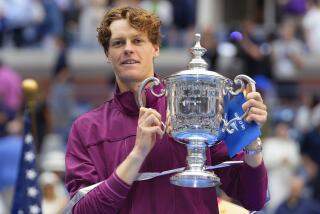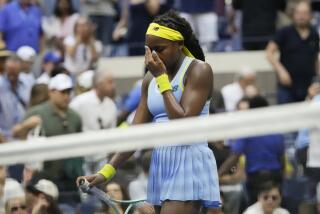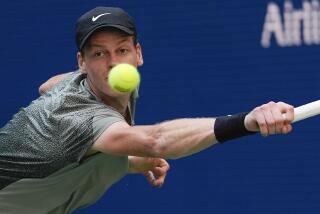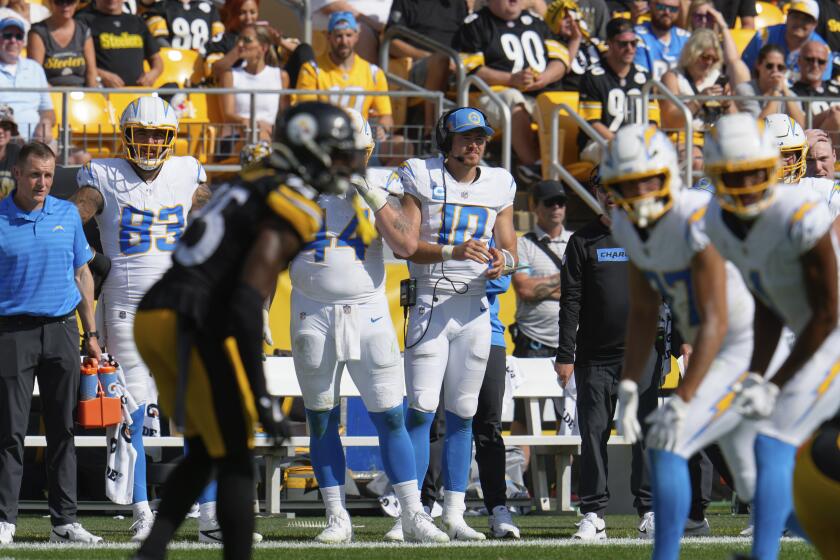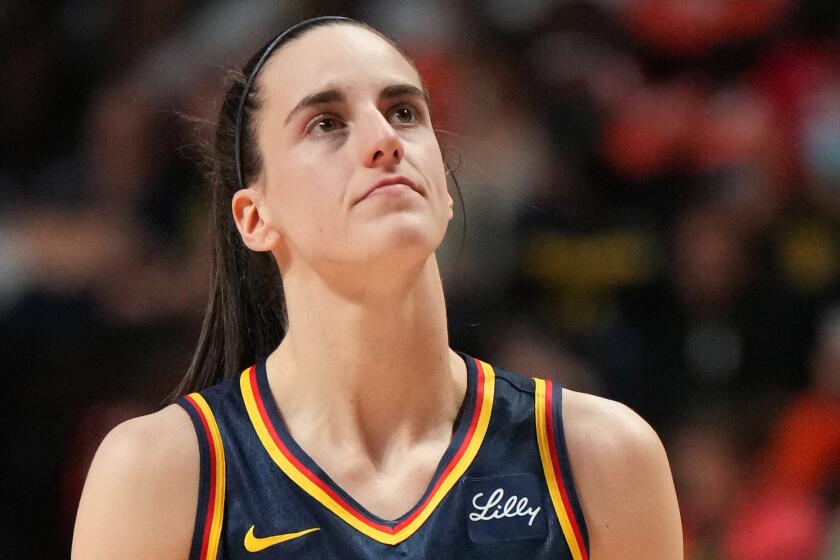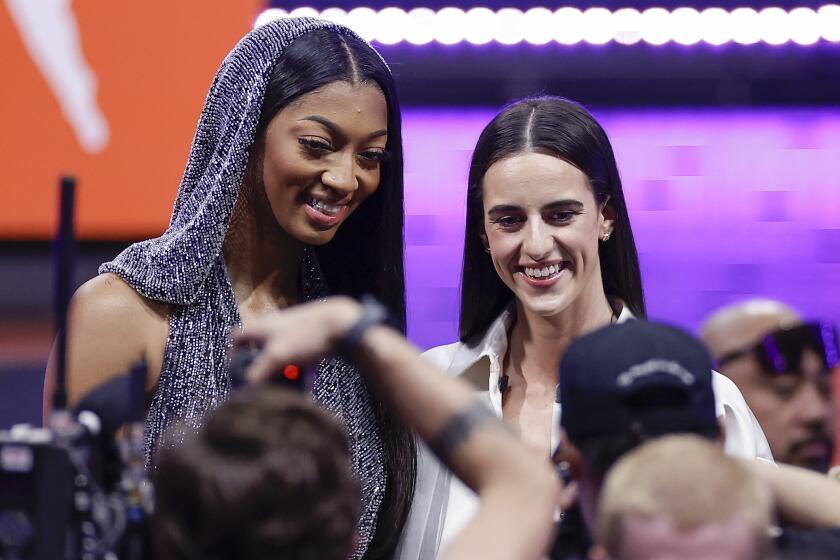U.S. Open seems a little flat without Rafael Nadal
This year’s U.S. Open tennis tournament is a party without the balloons. They are serving cake with no frosting.
Rafael Nadal is an ocean away, home on his beloved Spanish island of Mallorca. He is loving the time he has in the place where his mother says he “comes up for air” but certainly hating that he is not in Flushing Meadows, in the heat, noise and stress that only tennis in New York City can provide. There, he would be grinding match by match in the ugliest, toughest, most difficult tournament on the planet.
Nadal is injured. The vague reports we get say it is a knee. He has a congenital left foot problem that also could be acting up. He and his ever-present team are never particularly open about injuries, and it is not to be coy. It is just the way he and Uncle Toni and the close-knit clan approach things. Injuries are excuses. Nadal’s progress and future strategy are internal team things.
Still, his absence will not make the hearts of tennis fans grow fonder.
He is a force unlike any other who has wrapped grips on a racket handle and gone to war. He has already missed the Olympics, where he was the defending champion, and is now missing his third Grand Slam tournament because of an injury since he first won one in 2005. He is only 26.
He has already won 11 majors in 27 tries since he won that first one at the French Open at age 19. He has finished as the runner-up four times in that span. As recently as this year’s French Open, in which he struggled over two tough days through rain delays in a final against Novak Djokovic to win his seventh French title, he was a major force.
And he probably will be one again.
But when he went out early and meekly at Wimbledon and then missed the Olympics — and now the U.S. Open — concern among tennis fans became real.
Nadal plays tennis like Lombardi’s Packers ran the power sweep. If he hits 500 ground strokes in a match, he hits each one with power and aggression. There are few surprises. His opponents know what is coming. They just can’t do much about it.
He is the bombast in a tournament, the street fighter, the guy who gets off the canvas, time after time, bloodied and battered, and still lands the final haymaker. Much of the game around him, and across the net from him, is vanilla. Nadal’s game is chocolate strawberry pistachio, an abundance of flavor that has become an acquired taste for tennis fans.
The U.S. Open swallows up much of a tired field in its parched August and September days, with its unrelenting rock music and carnival-barker atmosphere. Nadal is swallow-proof. He was made for this, for bullying the bully, for mentally handling the challenges of bad weather, huge and unruly crowds and a stadium court built in the image and likeness of the Grand Canyon.
Since 2008, Nadal has been right in the thick of that, winning once, losing once in the final and twice in the semifinals.
Without Nadal, the U.S. Open has no foil for Roger Federer. It is Sampras without Agassi, Borg without McEnroe. Tennis fans long for the contrasts in style, which are fascinating and addictive. There will be competitive matches, such as Federer and Djokovic, or either against Andy Murray. But Nadal and Federer are the fire and ice.
Nadal is a swirling, grunting, lashing baseline strongman; Federer a smooth, cool, effortless puppeteer. Nadal says repeatedly that Federer is the greatest who ever played, and he both believes and means it. Often, after he says it, he goes out and beats him.
To not have the prospect of that matchup is to have a tournament with holes in the nets.
Nadal wrote a book last year with author John Carlin titled “Rafa.” In it, the intricacies and complexities of Nadal are woven nicely through a tale of a young man from a Mediterranean island, coached by a tough uncle and taskmaster and surrounded by a doting and loving family, which instills in him the values of being a good person and being humble in success.
It also documents the harsh training he is put through by Uncle Toni and the early onset of knee and foot problems. It is not a surprise, from the way Nadal trains and the nonstop gusto with which he plays, that his career may be threatened early.
There are those, of course, who will assume that this is the result of performance-enhancing drug use, especially since Nadal’s body is muscular and produces masterful physical efforts, while also breaking down.
A better theory is that he plays a high-intensity game in a sport that has never had the sense to understand it is eating its young. Tennis plays nonstop in mostly tough hard-court conditions over an 11-month schedule. Tennis players aren’t hit like football or hockey players, but don’t tell that to their knees.
The U.S. Open will grind on to its conclusion. There will be drama and excitement. But there will be no Rafa, and that makes this Grand Slam a tad less grand.
More to Read
Go beyond the scoreboard
Get the latest on L.A.'s teams in the daily Sports Report newsletter.
You may occasionally receive promotional content from the Los Angeles Times.
